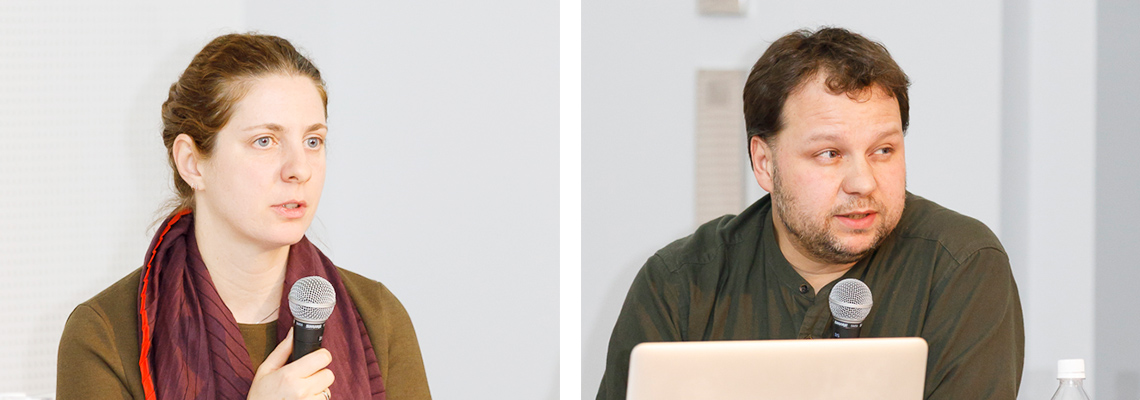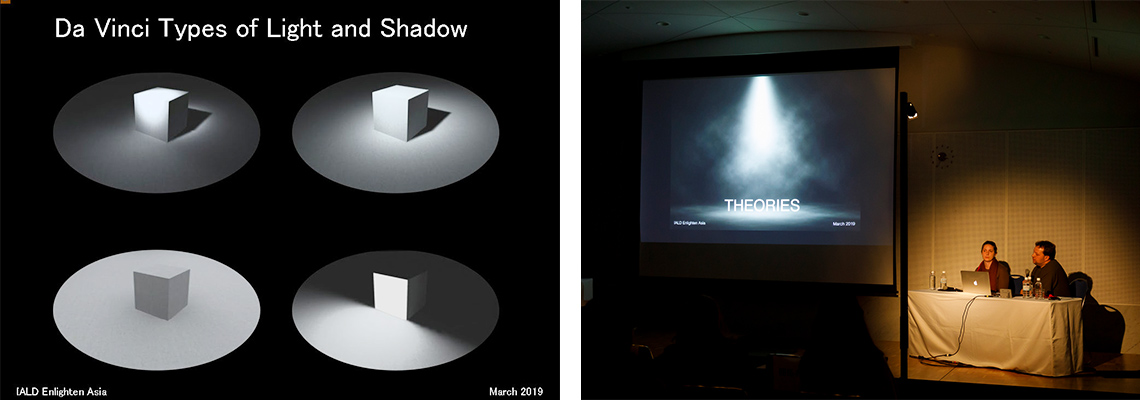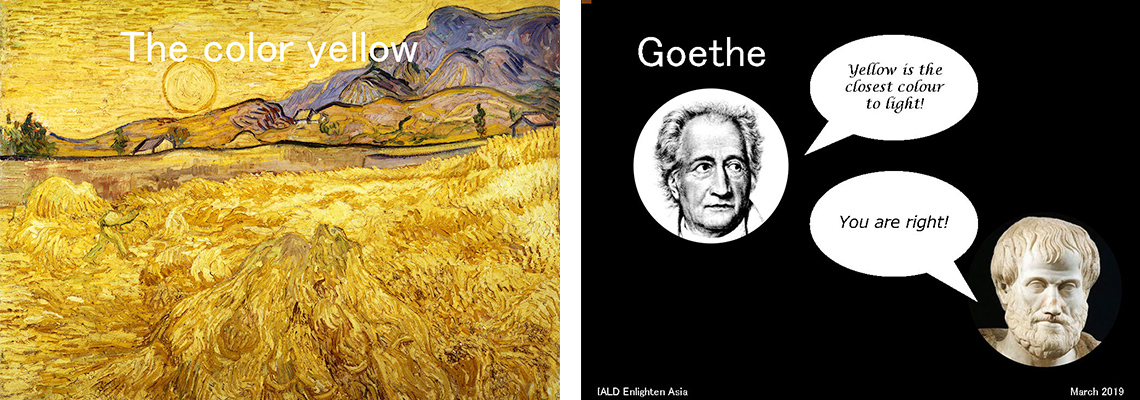How is “light” expressed if analyzed through Western paintings? German lighting designer, Paula Longato, has raised the question that lighting designers rarely considered much about the abstract topic of “the expression of light” while dealing with lighting on a daily basis.

In response to this question, Jochen Lochner first explained the history of the theory of light in Europe. In the article on paintings by Da Vinci , he proselytized the five types of light, including “narrow-angle direct light,” “wide angle direct light,” “diffused light,” and etc., and also three types of shadows including “projected shadow,” and “Dark/Light Effect (Chiaroscuro).”

Goethe thought that the colors were arranged in the order of “bright,” “yellow,” “red,” “blue” and “dark,” and that yellow was the closest color to light. However, despite the false argument, the conclusion is not necessarily contrary to modern science. The human eyes capture color information by means of retinal cones that respond to red, green and blue light, and send it to the brain, while yellow causes both red and green retinal cones to be activated, which is said to have the highest amount of light to be sensed. Therefore, Lochner suspects that yellow has historically been regarded as the closest color to light.

Longato examined how these theories apply to the paintings by Van Gogh , Ury , and Edward Hopper . It turned out that “yellow” and “white” are most often used as colors to express light after all; and also, the light can be recognized even if all elements of light and shadow mentioned by Da Vinci are not all set. For example, in “The Night Cafe ” by Van Gogh, though shadows are drawn only under the pool table in the center, it is possible enough to feel the presence of light because the lighting fixtures are drawn and the light is expressed in yellow. However, it also found out that the more information about light (type and direction of light, the way of shading, etc.), the more specific the light specification can be understood.

Both believe that the descriptions above will be a useful reference in adjusting the accuracy of quality, quantity, and specifications of information for each project phase and the person receiving information (such as client, architect or manufacturer) while lighting designers communicate on designs in their daily work.
【Date & Time】15:30‒16:30, March 7, 2019
【Venue】Room 101, 1F, Conference Tower, Tokyo Big Sight
【Speaker】Paula Longato, Senior Lighting Designer, Happold’s Berlin office
Jochen Lochner, Senior Lighting Designer, weißpunkt und purpur, Berlin/Germany
【Organizers】IALD Japan, JLMA, Nikkei Inc.

